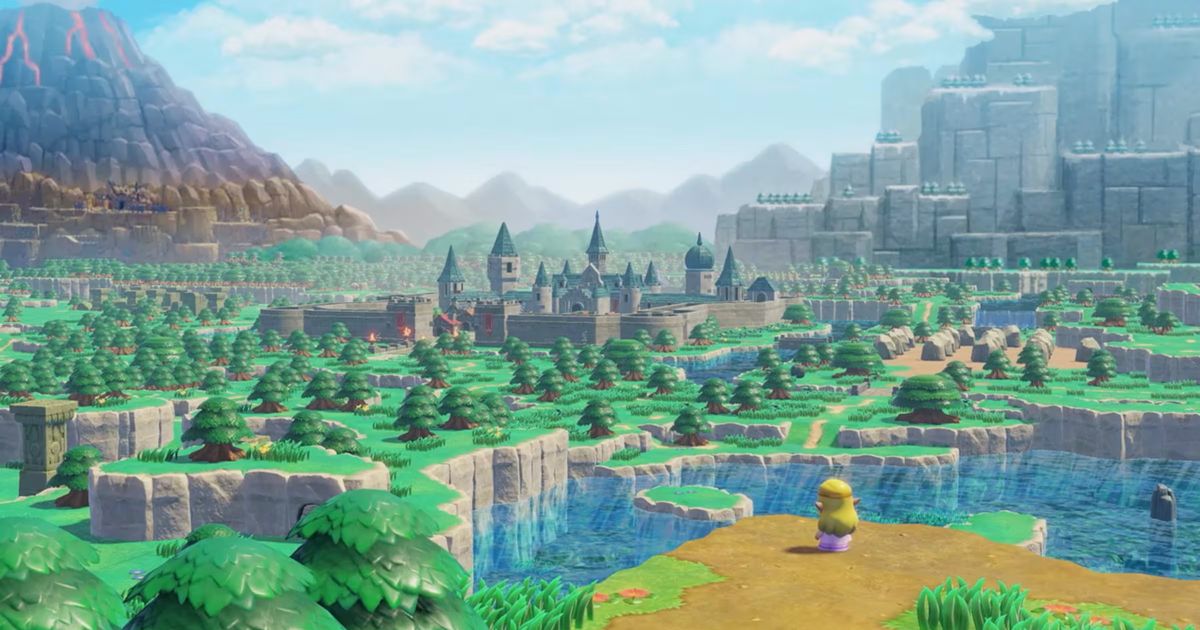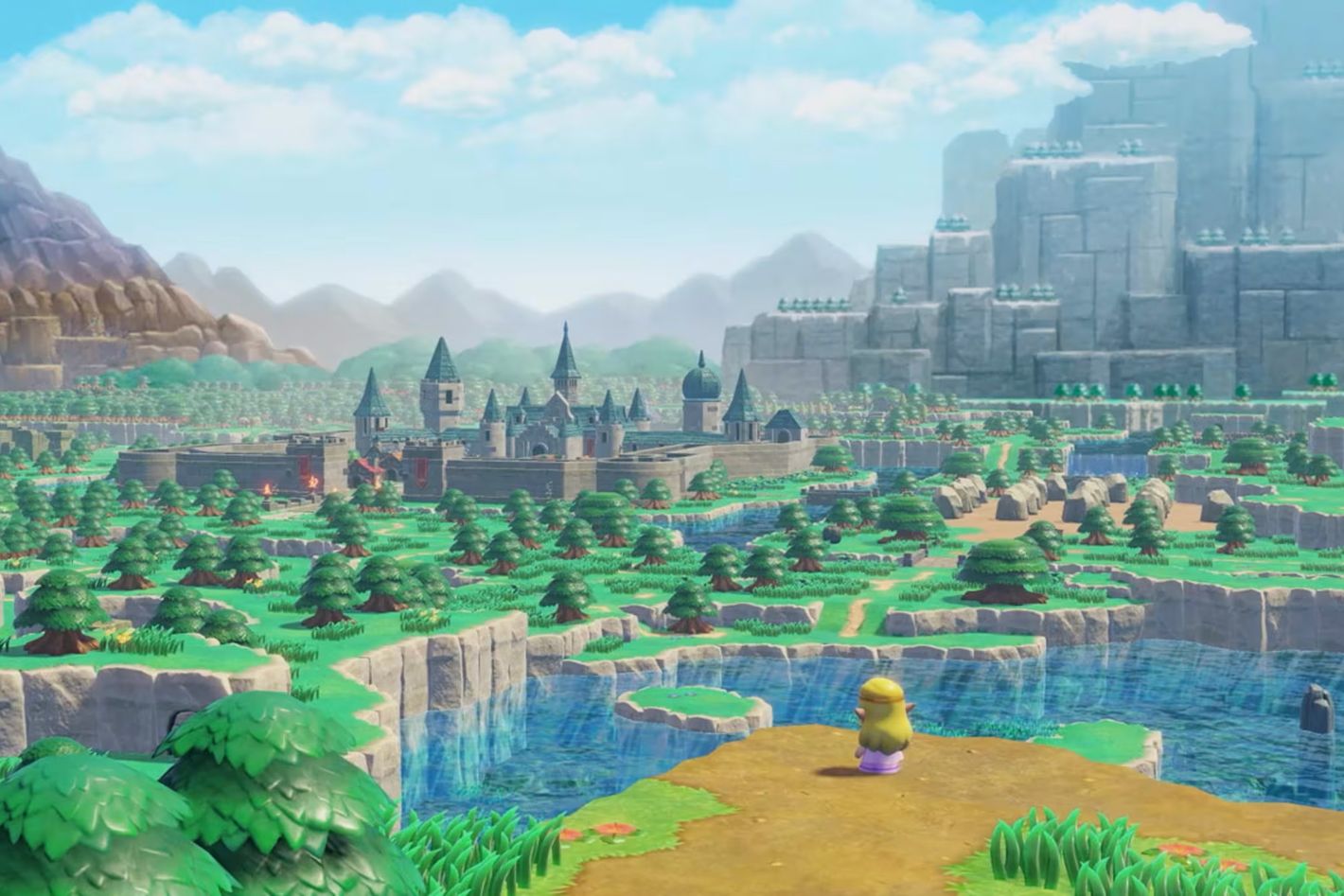The Legend of the Nintendo Switch
The Legend of Zelda: Echoes of Wisdom bookends another Nintendo revolution.


To quote noted gamer T.S. Eliot, the Nintendo Switch era seems to be ending not with a bang but a whimper. Nearly eight long years after a showstopping 2017 debut — well into retirement age for video-game consoles, which average five to seven years between new models —the Switch’s twilight has been prolonged and odd. In lieu of buzzy new 2024 releases, remakes like Paper Mario: The Thousand Year Door or Luigi’s Mansion 2 HD have stood in the gap, and other publishers have capitalized on the console’s popularity by bringing over collections of popular library titles like the Castlevania series and the tremendously popular Marvel vs. Capcom arcade games. Nintendo is treading water until the likely early-2025 announcement of the Switch’s successor, and as the console’s star fades, it has released The Legend of Zelda: Echoes of Wisdom.
Unlike Breath of the Wild or last year’s Tears of the Kingdom, which dazzled with their painterly landscapes and awe-inspiring scale, Echoes of Wisdom is bite-size and cute with a world that looks like a Playmobil set. Developed by frequent Nintendo collaborator Grezzo, the shop responsible for 2019’s similarly toyetic remake of The Legend of Zelda: Link’s Awakening, Echoes of Wisdom is also notable for being the first entry in the main Zelda series to cast players in the role of the eponymous princess and not the usual green-tunic’d hero, Link.
But Echoes of Wisdom doesn’t merely swap out its protagonist; it further extends Nintendo’s experimentation with how Zelda games — and all of the Switch-era games— are played. In Echoes, Zelda’s primary tool is not a sword but a staff with which players can summon copies of just about anything in the world: trees, crates, even monsters. Like the Tinkertoy-esque approach that Tears of the Kingdom brought to the series, the result is a brainier twist on the usual Zelda quest to save the kingdom, where puzzles have a dozen possible solutions instead of just one and monsters are best fought in clever ways less direct than thwacking them with a sword.
The new Zelda is not Nintendo’s last release of the year (that would be November’s Mario & Luigi: Brothership), but it feels like a final bow in the way it underlines how much the console has brought about a tectonic shift in how the company makes games. Nintendo’s Switch games were built for a generation that made their own fun in Minecraft, that shared novel or absurd gameplay clips on social media, that sought to author their own experiences in tandem with designers and share them with friends. To better speak to that audience, Nintendo stripped some of its best-known franchises down to their most fundamental elements, building them up to be more free-form and distinct from the competition. Next to Sony’s HBO-style cinematic games like The Last of Us Part 2 and God of War: Ragnarok, or the loud legacy franchises like Halo or Call of Duty that Microsoft has developed or acquired over the years, Nintendo remains refreshingly focused on play, wherever that leads its developers.
The results have yielded nothing less than tremendous success. Look no further than Animal Crossing: New Horizons, which pared back a series known for setting up shop in an idyllic town of anthropomorphic animals until players were building up the town themselves, allowing for new levels of expression and escape. This philosophical shift in design coincided with a period of profound isolation at a time when both of those things were in short supply, as a staggering 45 million people were lured to Animal Crossing’s charming rhythms.
Nintendo didn’t craft a pandemic-era hit because it anticipated some kind of looming disaster but because the Switch was designed to be approachable and to meet people where they are. The games the company made for it kept the console’s hybrid nature front of mind, structured to offer both open-world freedom and satisfying quick challenges in equal measure, on the couch or on the go. As mission statements go, you can’t get better than The Legend of Zelda: Breath of the Wild, which embodied Nintendo’s intentions for its forthcoming Switch library so completely that game and console were inextricable. (Ironic given that the game began development as a title for the company’s short-lived flop, the Wii U.)
Breath of the Wild set a pattern that Nintendo’s various teams would remix and apply to as many of its signature brands as possible: the tonally surprising post-apocalypse of Kirby and the Forgotten Land, Super Mario Odyssey’s (and later, Bowser’s Fury) steps toward a truly open-world Mario game, Pikmin 4’s blend of expansive garden puzzles and smaller task-management challenges, and Pokémon Legends: Arceus’s vision for a new kind of Pokémon game.
While it is not the final Switch game for Nintendo, The Legend of Zelda: Echoes of Wisdom does feel like a bookend, albeit an asymmetrical one. In many ways, it’s an illustration of the limits of this approach, of what happens when that delicate tug of war between player and designer tips a little too far in the player’s favor. While clearly an extension of the ideas presented in Tears of the Kingdom, Echoes’ version of Hyrule lacks Tears’ wildness. You are not courting chaos in your scheming; the chain of cause and effect has hard limits to how far it can sprawl out. The player has so many options that the possibilities are dizzying at first and then inconsequential as the easiest solutions win out. Why construct a Rube Goldberg machine to make a sandwich when a knife and my hands work just fine?
There is still fun to be had; any game that openly encourages its players to break it is a joy for lovers of lateral thinking. However, Echoes introduces the sneaking suspicion that the epochal shift in design brought about by Breath of the Wild and the Switch can risk flattening games as much as it can reinvigorate them. In the never-ending conversation between the people who make games and the people who play them, the most exciting thing that the Switch’s successor could bring to the table is, ironically, more Nintendo.
Related








